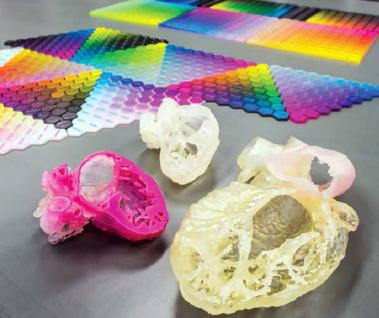Heart Centered: 3D Print Bureau Creates Intricate Cardiac Models
As heart surgeries become increasingly intricate and complicated, planning patient-specific care for challenging cases has become more difficult using traditional methods.
“When you are dealing with a complex situation where different organ systems are abnormal, each one needing its own specialist team with real-time decision making at the time of surgery, it becomes very difficult to coordinate, plan and make decisions,” said Rajesh Krishnamurthy, M.D., section chief of radiology research at Texas Children’s Hospital.
More physicians are relying on 3D printed medical models to help facilitate a comprehensive presurgical planning process and give all decision makers time to address specific challenges before the patient is on the table.
Game Changer
3D Print Bureau of Texas, a service bureau in Houston, partners with several area hospitals to create patient-specific medical models for pre-operative planning and testing. The service bureau previously produced the anatomical medical models using stereolithography, but the models were limited to a single hardness and color.
By moving to PolyJet™ technology, 3D Print Bureau of Texas can 3D print outer layers of heart models in a clear material and arteries in color for much greater clarity. The service bureau also prints materials of different hardnesses for a realistic feel that is suitable for physical testing.
“We realized the potential benefits of the Connex3 [3D Printer] right away and medical customers love the results,” said Chad Devine, operations for 3D Print Bureau of Texas.
The only limiting factor was the time needed — around eight hours for complex anatomical models — to manually remove support material from internal cavities.
But that number has been greatly reduced after 3D Print Bureau of Texas adopted SUP706 soluble support material. Now technicians use a pressure washer to remove the bulk of the support material, then submerge the part in an alkaline solution to dissolve the rest away. Technicians’ hands-on time is now just two hours.
“The new SUP706 support material is a game-changer for making medical models,” said Devine. “It drastically reduces the time required to remove support from complex geometries and internal passageways.”




